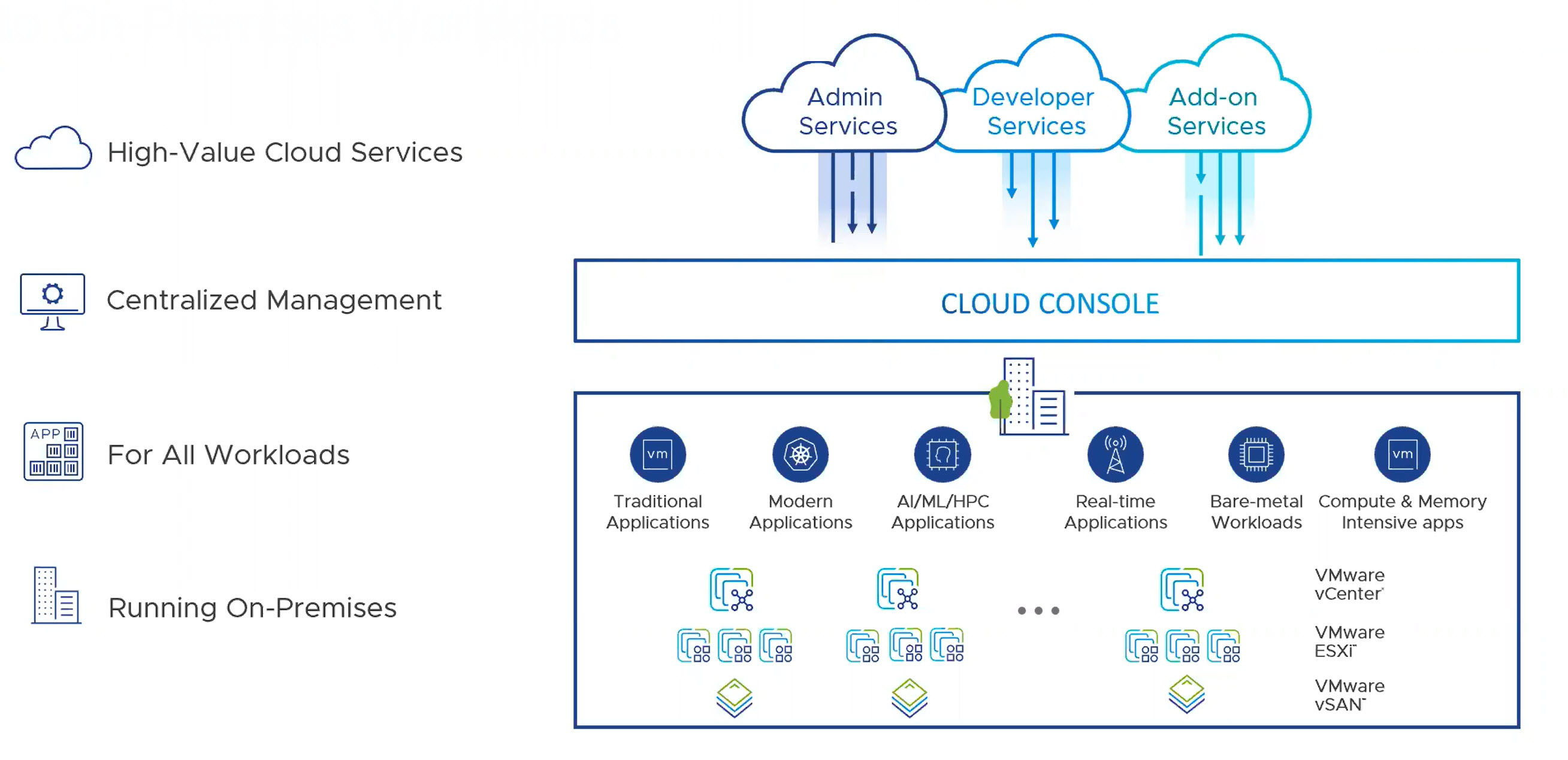 CLOUD
CLOUD
 CLOUD
CLOUD
 CLOUD
CLOUD
In a bid to erase distinctions between on-premises and cloud infrastructure VMware Inc. today introduced extensions to its vSphere virtualization platform and vSAN storage virtualization software that provide centralized cloud-based management of data center infrastructure.
They also provide access to new cloud services that can be activated without requiring changes to existing applications or hardware. All are based on subscription pricing.
VMware vSphere+ and vSAN+ are multicloud platforms that provide unified management via the VMware Cloud Console, a control plane for managing the entire suite of VMware cloud services across hybrid and native public clouds. The console aggregates global inventory, configuration, alerts, administration and security status for both cloud and on-premises infrastructure, enabling administrators to perform operations such as provisioning virtual machines to any vSphere cluster or existing vSAN datastore.
In addition, lifecycle management is improved through cloud-enabled automation of updates for on-premises infrastructure components as well as cloud-based remediation for configuration drift and security checks, the company said.
“Customers want the flexibility to build and run enterprise portfolios in the environment that’s optimal for each application,” said Mark Lohmeyer, senior vice president and general manager of VMware’s Cloud Infrastructure Business Group. “They want to use multiple public clouds, continue to invest in their own data centers and deploy at the edge.”
VMware is aiming to make setup as fast and easy as possible, said Weiguo He, senior director of product marketing. “Customers deploy a cloud gateway on-prem and connect the gateway to VMware Cloud Console workloads on other platforms,” he said. “After that, they register any number of vCenters in the console and convert them to subscriptions. During this entire process, there is no disruption to the host and workloads, which remain on-prem.”
The Cloud Console provides a unified global management plane in the cloud but does not replace the local vCenter management plane, he said.
“Admins get a consolidated global view of inventory, unified vSAN cluster management, centralized events and alerts as well as the ability to remediate configuration drift and provision VMs to any vSphere cluster,” he said. “This makes vSphere a consistent platform to run VMs and Kubernetes side by side.” Kubernetes is an orchestrator for the portable, self-contained operating environments called software containers.
The announcements are the first tangible deliverables of Project Arctic, a VMware initiative announced last October that’s intended to integrate cloud connectivity natively into vSphere.
VSphere+ supports the with full observability and management, VMware said. It allows for centralized operations via a multicloud management plane with enhanced security and governance for Kubernetes clusters along with integrated logging and registry capabilities.
Customers can also add in Tanzu, a suite of products for running and managing multiple Kubernetes clusters across on-premises, public cloud and edge platforms. Tanzu Mission Control Essentials provides global visibility across an organization’s entire Kubernetes footprint with automated operations.
The two new offerings enable customers to continue to use current equipment while expanding cloud capabilities, VMware said. Executives said these are the first in the line of new extensions to VMware’s core platforms that expand workload portability.
The first of those is VMware Cloud Disaster Recovery, an on-demand ransomware and disaster recovery service that’s integrated directly into the cloud console. Recovery can be done at a granular level or at large scale with support for file and folder-level recovery.
The disaster recover extension enables virtual machine snapshots to be stored in an air-gapped, scale-out cloud file system that all but eliminates the need for backup data centers are core locations. The result is up to 60% lower total cost of ownership, he said.
VMware is in the process of being acquired by Broadcom Inc., but executives declined to take questions on the pending transaction.
Support our open free content by sharing and engaging with our content and community.
Where Technology Leaders Connect, Share Intelligence & Create Opportunities
SiliconANGLE Media is a recognized leader in digital media innovation serving innovative audiences and brands, bringing together cutting-edge technology, influential content, strategic insights and real-time audience engagement. As the parent company of SiliconANGLE, theCUBE Network, theCUBE Research, CUBE365, theCUBE AI and theCUBE SuperStudios — such as those established in Silicon Valley and the New York Stock Exchange (NYSE) — SiliconANGLE Media operates at the intersection of media, technology, and AI. .
Founded by tech visionaries John Furrier and Dave Vellante, SiliconANGLE Media has built a powerful ecosystem of industry-leading digital media brands, with a reach of 15+ million elite tech professionals. The company’s new, proprietary theCUBE AI Video cloud is breaking ground in audience interaction, leveraging theCUBEai.com neural network to help technology companies make data-driven decisions and stay at the forefront of industry conversations.